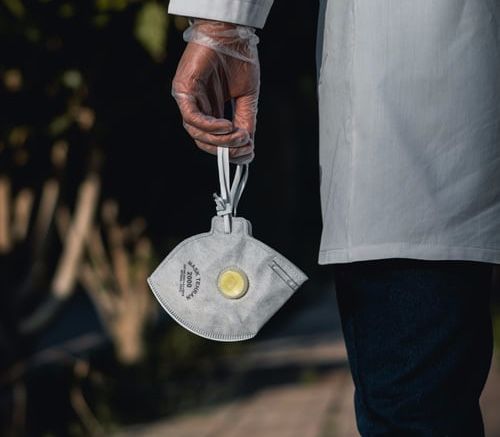Keeping the Supply Chain Intact in the Age of COVID-19
For those working in healthcare, the relationship with the supply chain department was an increasingly important one. Between daily mask utilization and supply reporting to scrambling to find more supplies, those working in healthcare supply chains were working exceedingly hard to keep our heads above water.

For most in infection prevention, the SARS-CoV-2/COVID-19 pandemic has been a testament to how critical our efforts are, but also the unsung heroes, like supply chain and environmental services (EVS). The frontlines of healthcare COVID-19 response are a place of pure bravery from our healthcare workers, but often, the behind-the-scenes work goes unnoticed. The current pandemic has highlighted the reliance healthcare has on not only manufacturing and supply of personal protective equipment (PPE), but also critical supplies like hand sanitizer and disinfecting wipes.
The first indicator that PPE might be a problem began in early February 2020. After the first case of COVID-19 was diagnosed in the United States in late January, many hospitals began to assess supplies and work to purchase more N95 respirators. Unfortunately, this was a larger, more global issue. As Maryn McKenna noted, most of the world’s supply of masks and respirators are actually manufactured in China, which can pose a problem when the country is impacted by an pandemic. Medical masks are critical resources for healthcare workers and the public had to be discouraged from purchasing them. As the weeks, and then months, went on though, new supply chain issues began to surface. For those working in healthcare, the relationship with the supply chain department was an increasingly important one. Between daily mask utilization and supply reporting to scrambling to find more supplies, those working in healthcare supply chains were working exceedingly hard to keep our heads above water.
The next supply to start becoming a needed commodity was hand sanitizer and disinfecting wipes. Two things I never thought we would run out of! The environmental disinfection aspect of the COVID-19 response is a critical piece but often overlooked with the obsession regarding masks.
For disinfecting wipes, efforts to scale up manufacturing had to occur quickly. Not only was there considerable public demand, but hospitals were desperately reliant on them for patient and staff safety. Based on my rounds in hospital units during this time, staff were ramping up use of these products out of concern, and a desperate desire to keep the virus at bay. Many times I had staff ask me why these supplies were hard to come by and what companies were doing to address it. While it’s obvious that most are ramping up manufacturing, I stumbled across the Clorox Company CEO, Benno Dorer’s published letter, which is the first I’ve seen in terms of addressing the challenges we are all facing, especially as a lot of messaging has focused on “demand exceeds our supply”rather than explaining how this need is being met. Dorer emphasized how they are scaling up supply by over 40 million units to meet consumer demand, which got me thinking about how can we learn from this to avoid having to go to such herculean efforts.
It’s hard to know what other companies are doing to produce more products and with little information coming out. It seems like now is the time to reinforce within the healthcare side. First, I hope this pushes our manufacturers and supply channels to be more robust in terms of scaling up and down. But also, secondly, this is the time to perhaps create more sustainable measures to ensure supplies and be better stewards of our resources. From UV disinfection of masks to ensuring we have a better understanding of our usage and how we can better predict areas that might be short in supplies. While it’s great that distilleries are helping to make hand sanitizer, this is born out of a reliance on international manufacturing that is susceptible to massive disruption, but also too often a habit of not asking how much we’re using and if we can be better stewards of it. Practice makes permanent, right? So as manufacturers work to provide hospitals with the desperate resources needed to combat COVID-19, let’s also use this time to reinforce better supply chains, more real-time supply monitoring efforts in healthcare, and a better support supply chain program within healthcare as a whole.
“Ongoing Assault”: How HHS Layoffs Have Eviscerated Infection Prevention Support Across the Nation
April 1st 2025Mass layoffs at HHS and CDC have gutted critical infection prevention programs, leaving frontline professionals overwhelmed, under-resourced, and desperate to safeguard public health.
Unraveling a Candida auris Outbreak: Infection Control Challenges in a Burn ICU
March 19th 2025A Candida auris outbreak in a burn intensive care unit (BICU) in Illinois has highlighted the persistent challenges of infection control in high-risk health care settings. Despite rigorous containment efforts, this multidrug-resistant fungal pathogen continued to spread, underscoring the need for enhanced prevention strategies, environmental monitoring, and genomic surveillance.
Unmasking Long COVID: Dr Noah Greenspan on Recovery, Research Gaps, and the Future of Treatment
March 18th 2025Dr Noah Greenspan discusses the evolving understanding of long COVID, current treatment strategies, diagnostic challenges, and the critical need for research and awareness in post-viral syndromes.